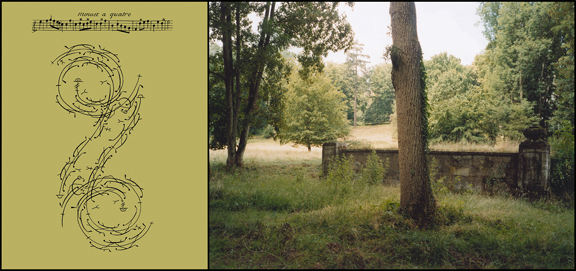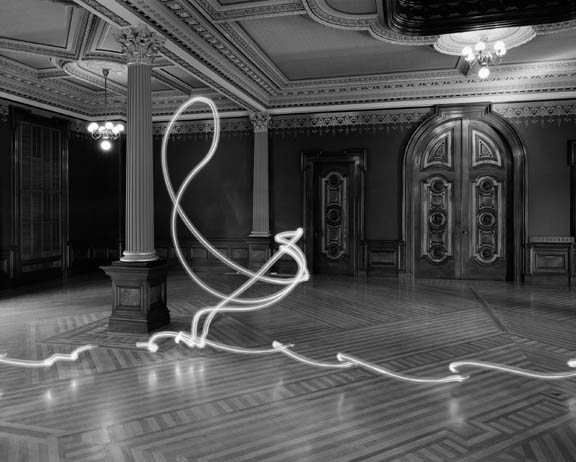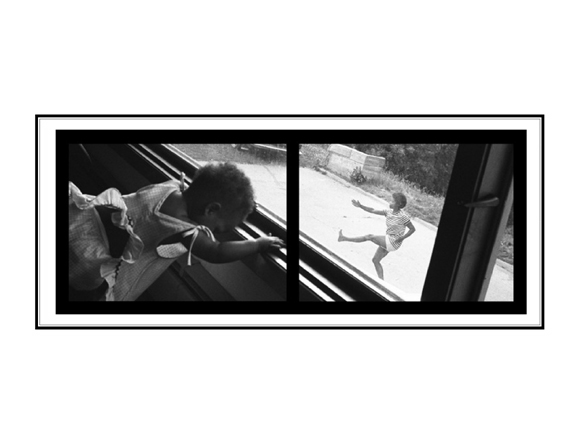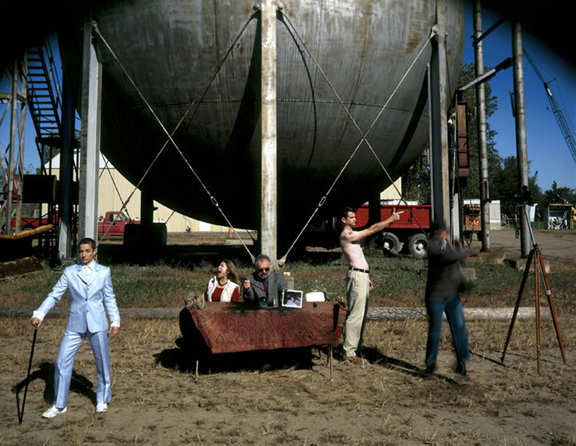Choreographic: World Class, Lots of Fun
Jeffrey Kalstrom saw the dance as well as the dance photos at the Minnesota Center for Photography recently. The combination of dance imagery and dance performance was dazzling; he recommends you look for performances by any of these artists.





Choreographic: Images of Movement at the Minnesota Center for Photography was curated by the MCP’s director, George Slade. The exhibit asks the question, “Can photography capture the essance of dance?” or as Slade put it, “Can a still photograph help us comprehend an art form that involves motion, perspective, time, positioning, sound, and a flow of change that is difficult enough to witness and access in person?” The work of the six photographers in the exhibit takes wildly divergent approaches to this question.
The Photographs
Justin Guariglia’s work focuses on ritual kung fu practiced by the monks of China’s legendary Shao Lin Temple. Guariglia uses both video and still photography to capture the complex choreography of this ritualistic discipline. In a darkened room a slow-motion video shows a solitary monk against a black background practicing. The sound is amplified so that an arm moving through the air produces a rushing, whooshing sound. This movement made audible combined with the elegance of the motions is mesmerizing. The religious edge of kung fu, its mystery and veiled violence, come through in the viewing. In the “Shadow” series a faint grey blurred image of a kung fu movement is set against an inky black background, capturing a stony elegance.
Polly Norman sets up objects behind glass blocks and shoots the distorted images seen through the glass. The resulting silver prints are repeated, and mounted together create complex repeating patterns. I find the results sensual, dreaming and lush . . . but I wish there were some hints as to the reality of the distorted objects. In totally disguising the nature of the objects a chance to play with meaning is lost. As abstract patterns they are sensual, but somewhat unemotional. With snatches of realism they could have more emotional complexity.
Katie McCormick’s diptychs recreate a dream of eighteenth-century culture. She has taken lush images of gardens of this era, which were designed as stages for choreographed performances. McCormick juxtaposes these photographs with printed patterns taken from an early attempt to “write” choreography. These works are titled with the pieces of music that were used in the performances. Choreographed patterns are graceful; they are all idea and no flesh, and pretty. This work is steeped in a dreamy nostalgia. The abandoned gardens point towards the decay of this kind of choreographed order.
Stuart Allen photographs dancers with lights fixed to their bodies moving in repeated patterns in interior spaces. The resulting images bear no trace of the dancer, just the frozen light pattern in the architectural space. These images were taken in empty rooms of great beauty and complexity in the Crooker Art Museum. The architectural detail in these rooms is so strong they trump the light patterns. I love the Muybridgian concept behind the work. Allen might be wise to attempt this work again in a more neutral space.
Bill Cottman’s work exists in a different realm that the other work in the exhibit. His project is not so much the creation of photographs and video as it is documentation and exploration of his family’s consciousness of itself. Cottman’s work captures the process of history developing through generations with a love of dance and music as a family center. It was in the lecture/ performance he gave in which his work perhaps took full form. Those in attendance described the performance as “mesmerizing” and “very moving. “ Instead of talking about his work, Cottman introduced dancer Roxanne Wallace and poet J. Otis Powell!. A large back-projection screen was installed in the gallery. The video (which normally is shown on small monitors in the gallery) started – in it are images of his daughter and wife in a time-shifting array of images interconnected by images of dancing. As the video played Powell! read his poems and Wallace moved along with the imagery (she could see the projected video through a small monitor). Through her movements she responded to the images on the screen. I would like to see how Cottman further develops this project.
Sean Smuda works with dancers, friends, elaborate props, and dynamic settings to develop complex tableaus. They have an allegorical, almost religious quality. Whether working out of doors or in the studio Smuda is masterful in his use of light and space. The poses, costumes, and spaces these figures inhabit seemingly point toward very specific messages. But the work remains elusive, mysterious. His titles tease but do not reveal. This dance of meaning can be either frustrating or fabulous depending on your idea of fun. They are most operatic, entertaining and lush.
Sean gave a lecture on his work and served as impresario for series of dance performances. During the lecture Smuda gave an account of how he created each tableau. Smuda also talked about what each carefully chosen element meant to him; it was fascinating to hear his specific interpretations of each. It is unlikely that any viewer would arrive at the same intended reading as the maker. I don’t think this is a deficit, the need for each viewer to supply an interpretation.
The Dances
Sean’s lecture was climaxed by a series of dances informally produced in the MCP gallery. It was magical to see dance works of this quality preformed in such an intimate space.
”Tiny Town,” choreographed by Karen Sherman,. Dancers: Karen Sherman, Morgan Thorson, and Kristin Van Loon
This work was delightful fun. It caused me to break out in a grin which could only be described as “shiteating.” The work began with a pensive solo by Sherman. Then Thorson and Van Loon come in and things explode. All three dancers work at upstaging the others with winsome charm and occasional quasi-beauty-pageant moves. The silence is pierced by Van Loon’s occasional whoops.
”Hijack,” choreographed and danced by Arwen Wilder and Sheldon Smith
The big guy (Smith) and the small gal (Wilder) come out, she in a geek suit, him in slacker clothes, to a plodding slow-drive piano. Smith picks up and manipulates Wilder into compressed pretzel-like shapes; the tension builds . . . until just when it starts to look painful he releases her. This sequence repeats, the same but different, over and over until Wilder breaks away and does an “I’m a little airplane” turn at the end. It was a fresh exploration of a partnership and bounced around issues of power, gender, and sexuality. It was nervy fun.
”Body Cartography,” choreographed and danced by Olive Bieringa and Otto Ramstad
Body Cartography (the partnership of Olive Bieringa and Otto Ramstead) uses a dance discipline that attempts to integrate contact improvisation with mind-body mediation techniques. The two dancers enter, and from across the room mimic and match each other’s movements. The movements tend toward “micro” muscle twitches as opposed to covering a lot of ground. After several minutes the dancers break and remove their clothing except for matching “tighty whities”. In some unexplained way it was a relief when the dancers disrobed. It was as if the extreme intimacy of the dancing was ‘lightened” by the partial nudity At times ten feet apart, often just inches away from each other, the dancers vibrated in silent dialogue. Spooky electro drone sounds with sketchy rhythms ground the work. This was not lighthearted stuff, but singularly emotional, and moving.
Untitled, choreographed by Chris Schlicting. Dancers: Anna Marie Shogren, Justin Jones
A couple unison dancing with no sound except feet hitting ground. The movement is upright cheerleader snappy regimental ballroom chorus line. They were the youngest of the dancers and least experienced, and maybe just a little nervous, but their enthusiasm shone through. I waited for the unison to break at some point. It did but a little too late, only at the end. This work lacks at place to go to, a resolution, an ending.
The dance performances were a very exciting and revealing addition to the exhibit. How lucky we are to have such world-class dancers working here! Go see any of these dancers perform anytime you can. Even if you do not like dancing or know dance– and especially if you have never seen dance. It’s like eating food from a foreign country that you’ve never heard from before: always worth trying.